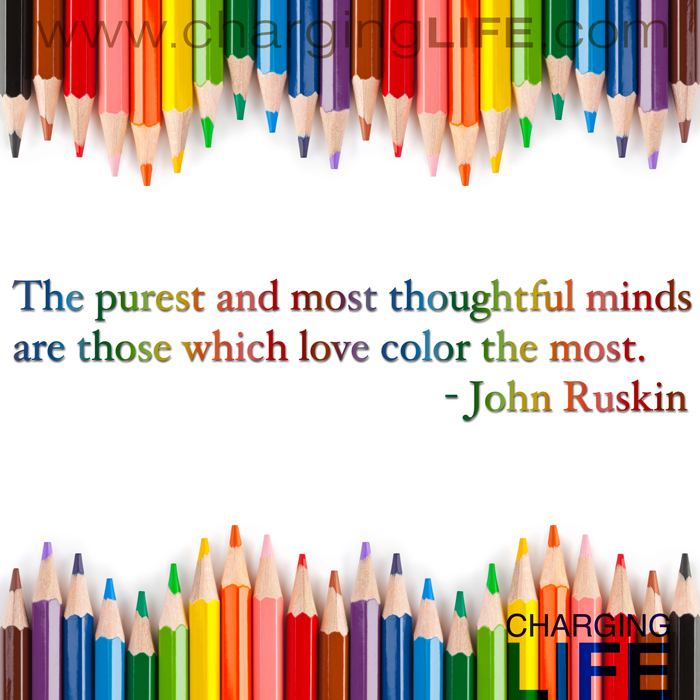Paul Whybrow
Full Member
A stylistic flourish that can be effective, is to insert references to one particular colour throughout the text. All colours mean something on an emotional level...just think how they've entered the English language to describe moods.
It's best to spread them out—unless a character was obsessed with purity (or a snowman), saying that he wore white boots, a pair of white trousers, a white shirt, a white jacket and a white scarf might be a bit much—hang on, that was exactly what I wore in the early 1980s (well, it was the age of the New Romantics).
My current WIP is more carnal and violent than the first four Cornish Detective stories, so I've splattered the passionate colour red here and there: LED indicator lights glow red, a salvage ship's hull is red, the immaculate red brickwork on a murder suspect's art gallery indicates his obsession with order, one of the detectives drives a red Lotus sports car and a seagull has a sinister splash of red on its yellow beak. It's not just things that are red, for my detectives are hampered by red tape, sense red flags of warning, and my protagonist sees red when he discovers paedophilic images in the suspect's private gallery; he sees more red—his own blood—when the baddy stabs him.
I vary things by using scarlet, vermilion, carmine, ruby, rust and cherry as descriptors.
Unsurprisingly, crime novels often have red covers. I'm currently reading White Fire, by writing team Preston & Child, whose book cover shows bloody red footprints meandering across white snow into snow-encrusted conifers.

Film makers have long used colours in a symbolic way. For example, Amélie director Jean-Pierre Jeunet conjures up his film in a dreamlike way. Through the use of coloured filters, Paris becomes a golden wonderland. Green is used as a comforting colour, symbolising hope and nature. The intensity of red images stands for warmth, passion and love, often reflecting Amélie's mood.

Painters use colour to evoke emotions —think of Vincent Van Gogh's glowing yellow sunflowers or the cool blues of Picasso's blue period.
Were you writing a cheerful story, colours associated with happiness, such as yellow and orange could be used to add to the jollity. As for horror and thrillers, there are many shades of grey and black. Pink has many connotations, including how it's used on book covers.
Novelists throughout history have strengthened the mood of their stories with colour motifs. F. Scott Fitzgerald used colour in a deliberate way in The Great Gatsby:
Color Symbolism in The Great Gatsby
Think of how influential having a colour in the title can be:
20 Books With A Color In The Title - Worlds Best Story
Interestingly, swearing is called "colourful language!"
How do you use colour in your stories?

It's best to spread them out—unless a character was obsessed with purity (or a snowman), saying that he wore white boots, a pair of white trousers, a white shirt, a white jacket and a white scarf might be a bit much—hang on, that was exactly what I wore in the early 1980s (well, it was the age of the New Romantics).
My current WIP is more carnal and violent than the first four Cornish Detective stories, so I've splattered the passionate colour red here and there: LED indicator lights glow red, a salvage ship's hull is red, the immaculate red brickwork on a murder suspect's art gallery indicates his obsession with order, one of the detectives drives a red Lotus sports car and a seagull has a sinister splash of red on its yellow beak. It's not just things that are red, for my detectives are hampered by red tape, sense red flags of warning, and my protagonist sees red when he discovers paedophilic images in the suspect's private gallery; he sees more red—his own blood—when the baddy stabs him.
I vary things by using scarlet, vermilion, carmine, ruby, rust and cherry as descriptors.
Unsurprisingly, crime novels often have red covers. I'm currently reading White Fire, by writing team Preston & Child, whose book cover shows bloody red footprints meandering across white snow into snow-encrusted conifers.

Film makers have long used colours in a symbolic way. For example, Amélie director Jean-Pierre Jeunet conjures up his film in a dreamlike way. Through the use of coloured filters, Paris becomes a golden wonderland. Green is used as a comforting colour, symbolising hope and nature. The intensity of red images stands for warmth, passion and love, often reflecting Amélie's mood.

Painters use colour to evoke emotions —think of Vincent Van Gogh's glowing yellow sunflowers or the cool blues of Picasso's blue period.
Were you writing a cheerful story, colours associated with happiness, such as yellow and orange could be used to add to the jollity. As for horror and thrillers, there are many shades of grey and black. Pink has many connotations, including how it's used on book covers.
Novelists throughout history have strengthened the mood of their stories with colour motifs. F. Scott Fitzgerald used colour in a deliberate way in The Great Gatsby:
Color Symbolism in The Great Gatsby
Think of how influential having a colour in the title can be:
20 Books With A Color In The Title - Worlds Best Story
Interestingly, swearing is called "colourful language!"
How do you use colour in your stories?

